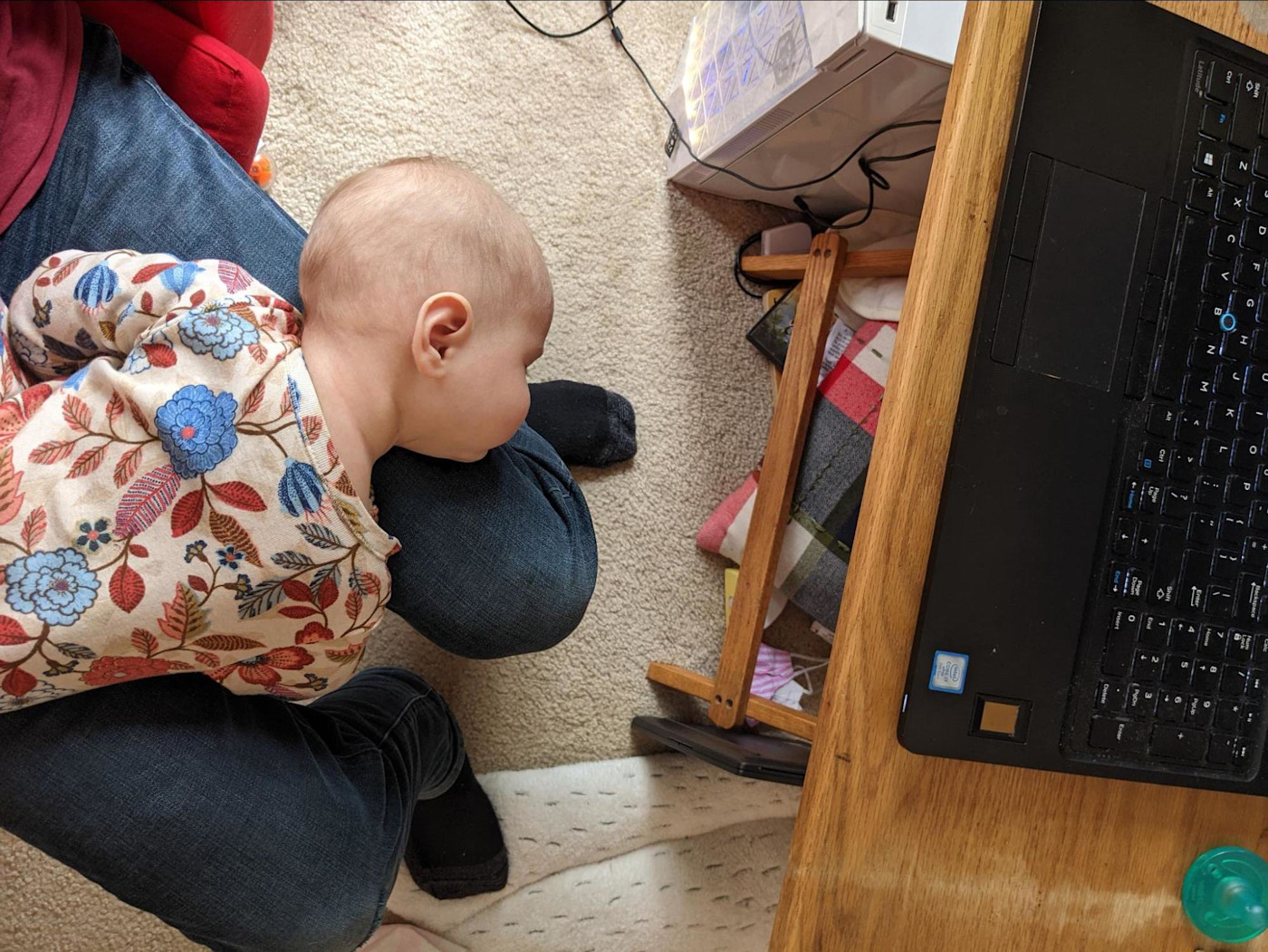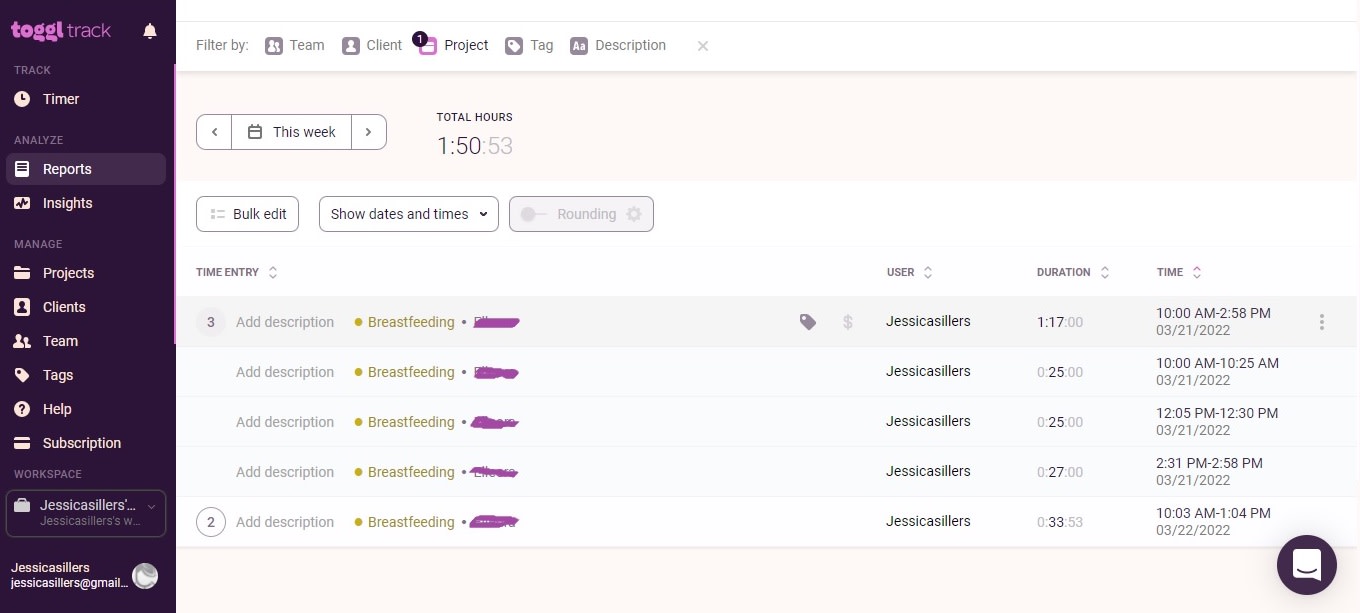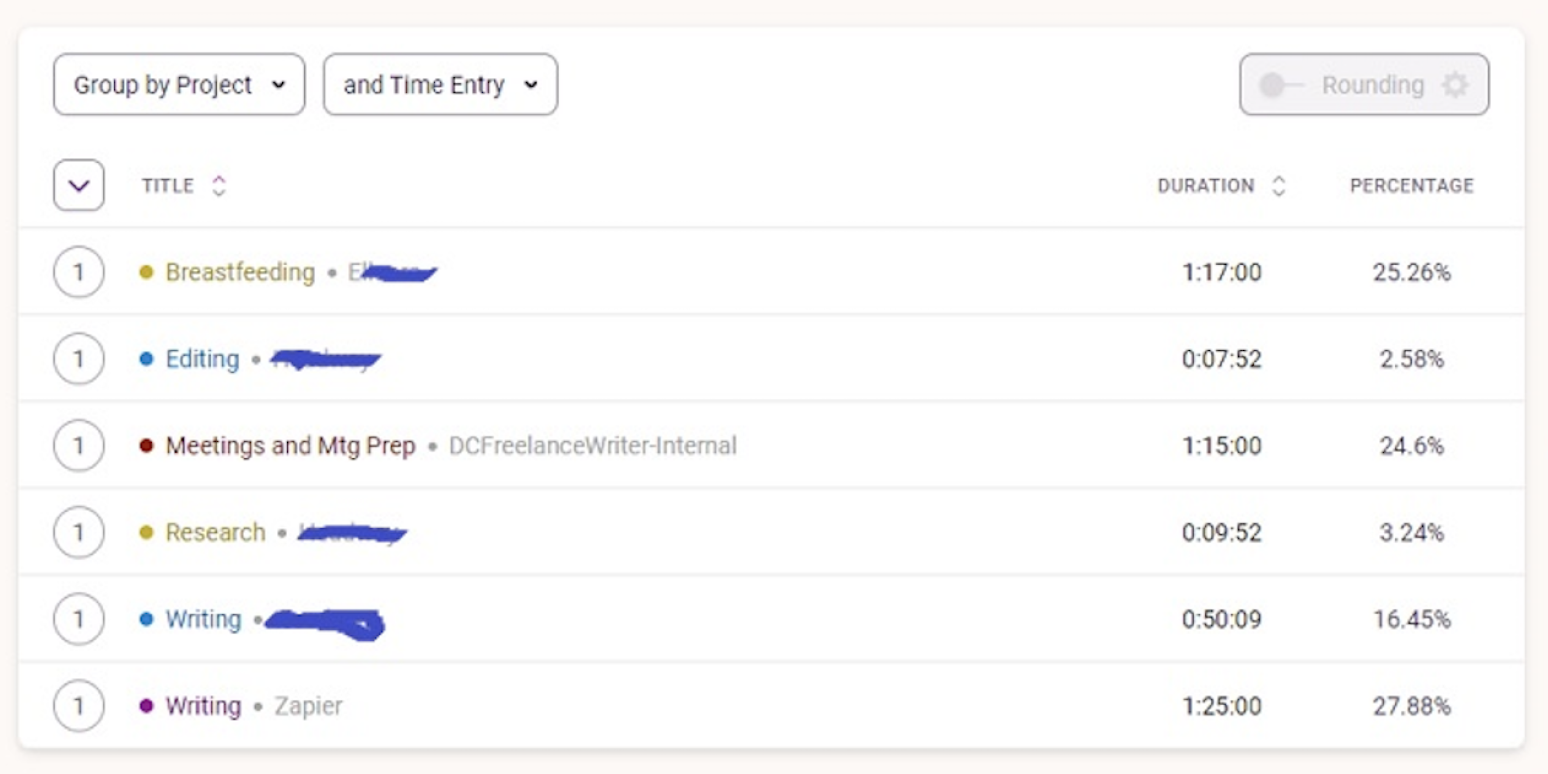Last October, I welcomed my third baby. And when I resumed working with clients after a few months, I didn’t come back to a “normal” workday. I’m the primary caretaker for my child while I work. She doesn’t leave my side, so having a work life means following the rhythm of her day.
Working with a baby in tow is nothing short of chaos, but I’ve made it work. How? I ignore the usual jokes about my “littlest coworker”; instead, I think about my baby as my littlest client—and use a client tracking app to manage her accordingly.
Why baby care and paid work belong in the same tracking app
Yes, there are baby tracking apps. I’ve tried them all, and they set my teeth on edge.
Apps specializing in tracking baby habits manage to feel too twee and too militant at the same time. When my newborn’s been wailing for hours, I’m not in the mood to be told I should be gushing over her sweet toes and dimples. And the prompts to track her feedings, diapers, naps, weight, and head circumference (seriously) can feel like they come with an underlying “Are you doing enough?” It’s so easy to come away feeling like a failure as a parent.
But more importantly, baby apps don’t take into account my priorities outside of my baby. The reality is that the rest of my life—including my work—is integrated with and constantly interrupted by my infant. Any app that’s genuinely going to help me has to be able to recognize the conflicts and solutions that come with having an infant and a job at the same time.
If I need to feed her 7 to 8 times a day and I’ve only gotten in 6 sessions, my baby app is only set up to tell me I’ve fallen short, which isn’t helpful. But if I can see that the 6-feedings day happened the day I had back-to-back meetings, I can make a new plan going forward.

There’s certainly value in using a niche app for a niche purpose. You can clear out distractions and check progress at a glance more easily. But I think there’s a lot to be said for putting all the parts of your life together, so you see the interaction between them.
How I track my baby on Toggl
Toggl is a time tracking app that allows you to designate projects and clients, and track the work you do for each. A project can be literally any task you want to track (e.g., emails, research, or a specific deliverable).
If you work with multiple clients, you can add them all, and each client can have several projects attached to them. It’s helpful as an extra way of filtering and organizing reports.


I knew I wanted to track my baby in my work app, but I initially just added “Breastfeeding” as a project. It was the most time-consuming part of my infant care, and I clearly wasn’t going to get confused about who that project belonged to. But as she’s growing, I’m finding she needs client-level organization, so I can associate her with other projects, like “Gassy,” “Tummy time,” and “Pediatrician.” As her needs change, my days do, too, so her care needs to be a category of tasks, not just one project.
That’s how my baby became a client.
P.S. Toggl and most other time tracking apps have mobile versions, so you can start your baby tracking without being at your computer. Or you can connect your app to Alexa or Google Assistant, so you can just say out loud what’s happening and have it start the timer in your time tracking app.
How to use data on your baby client (and work clients, too)
I use the results of my time tracking in a few ways, both to make more informed decisions about my baby’s health and to plan my workdays more effectively.
1. Scheduling smarter deadlines
Keeping info on my childcare and work time commitments in the same app helps me make more accurate plans for how to use my time.
For example, I can see patterns in when and how long my baby feeds. Take a look at last week’s report—I can see what chunk of my usual working hours is spent on my littlest (and easily most demanding) client.

Having a realistic, integrated sense of where my daily time goes helps me budget out the time I need to get other work done.
2. Bringing data to doctor’s appointments
A big part of a pediatrician visit for an infant is data-driven—the doctor wants to track my baby’s growth and milestones and discuss her habits. If she’s not quite on her expected growth curve, having data at hand helps me and the pediatrician assess whether it makes sense to add or extend a feeding, offer supplements, or take a “wait and see” approach.
The Reports page in Toggl lumps repeated projects into one total entry. If you click on the entry, you can see the project listed out by date with a number for how many entries it had that day. Click the number, and it expands, so you can see the individual entries.

3. Identifying your best clients
My baby is either my favorite or least favorite client, depending on the time of day. Regardless, I have to do whatever she needs. I have much more flexibility with other clients.
Balancing work and baby care means being selective about which projects I accept. And by tracking the two together, I can look for types of projects or clients that blend best with #babylife. If I see a week when baby care went smoothly, that’s a cue to take note of what work projects or clients fit well into my whole-life schedule—and do more of it.
I know I can read articles or play a tutorial video while caring for the baby (she’ll be a SaaS expert before she can even crawl!), while meetings and interviews can make it tough to keep to a consistent feeding schedule. But some tasks are fuzzier, and my time tracking tool can help me suss out what works and what doesn’t.
Ideally, I want a mix of high-paying and great growth opportunity clients, all while being able to balance it with my baby time. If a client isn’t in either category—or doesn’t allow me the time I need for baby—it’s time to consider if they might be taking up time I can’t spare.
4. Problem-solving with time tracking
Time tracking is only a worthwhile tool if you’re using the info you collect. The next step is actually making changes to use your time better—both for work and for baby.
For example, you might refine the way you work with a client to be more efficient. For one client, I noticed there was one step in the process that was particularly time-consuming, and I felt like there could be a way to skip it without sacrificing much value. I talked it out with the client, and they were on board, so I save about three hours per assignment—which helps my days flow more smoothly.
You can use your baby data for more than just pediatrician appointments, too. If you have a partner, share them on your time tracking tool and add them as the assignee for some of the tasks. (Love it when my partner takes the “Gassy” project.) Then be sure that time spent on baby projects aligns—if it doesn’t, shift around duties until things feel more balanced.
Combining your baby and work tasks into one app helps you see where childcare and work commitments meet in real life. And you can keep it up past the baby stage: you might still value insight on how dropoff/pickup or helping with homework blends into your workday. Now that working from home is the new normal, compartmentalizing isn’t as much of an option—and maybe it shouldn’t be anyway.
Need Any Technology Assistance? Call Pursho @ 0731-6725516





